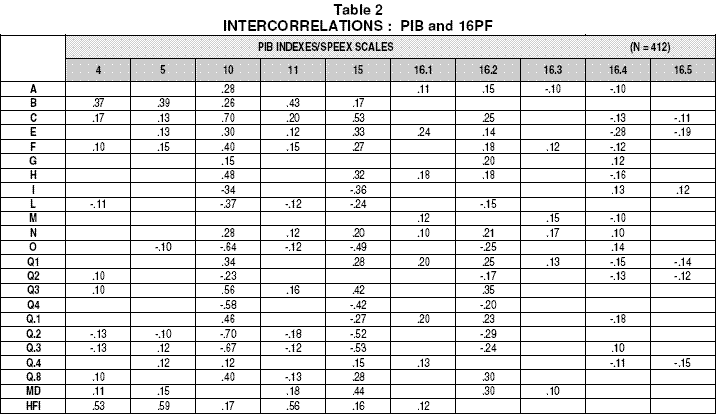Construct validity

METHOD OF ANALYSIS
It has been pointed out by D. T. Campbell (1960) that in order to demonstrate construct validity, we must show not only that a measure correlates highly with other variables with which it should theoretically correlate, but also that it does not correlate significantly with variables from which it should differ. This process is described as convergent validation and the latter as discriminant validation.
The focus in this study is on convergent validity and significant correlation coefficients between measures will be demonstrated by means of a matrix. Divergent validity will also be demonstrated through non-significant correlation between measures focusing on cognitive abilities and social and emotional traits. It can be expected that relatively low correlations exist between measures measuring different traits and when different methods are used for these measurements. Although emotional traits could at times be expected to have an effect on cognitive performance, such effects must theoretically be explainable.

Abbreviations: Second Order Factors.
Q.1: Extroversion
Q.2: Anxiety
Q.3: Tough Poise
Q.4: Independence
Q.8: Compulsivity
HFI: High Level Figure Classification Test.
Table 2 reflects the following:
All the correlation coefficients in the table are significant, although only the main observations will be considered for our purposes. Indices 4, 5 and 11 (psychological SPEEX equivalents: SPEEX 3, 4 and 6) show high correlations of a significant nature with Factor B and the High Level Figure Classification Test. There are clear indications that Indices 4, 5 and 11 measure abstract and general reasoning abilities required to perform specific tasks as defined by each of these tests.
The significantly strong relationship between Index 5 and the High Level Figure Classification Test is of particular importance. Non-verbal cognitive measures are known for emphasizing the G-factor or general attributes of mental alertness or observance. The G-factor is influenced less by culturally-related factors than the S-factors which are known as the more specific attributes of mental alertness. A culturally fair measure of mental alertness should be highly loaded with the G-factor, which in the case of Index 5 seems to be true.
High scores on Index 10 reflect positive self-image and according to the 16PF, are significantly related to a person who is emotionally stable, socially venturesome, self-assured, self-controlled, with a low anxiety level and tough-minded. These findings provide strong indication of the construct validity of Index 10 (SPEEX equivalent: Scale 11).
High scores on Index 15 reflect internal motivation and according to the 16PF, are significantly related to people who are emotionally stable, self-assured, self-controlled, have a low anxiety level and are tough-minded. These findings provide an indication of the construct validity of Index 15. There are clear indications that Index 16.1 (SPEEX 1502: Contest) measures assertiveness and competitive behaviour in conflict situations. High scores on Index 16.1 according to the 16PF, are significantly related to people who are more assertive, extroverted, independent, imaginative, shrewd and according to the High Level Figure Classification Test, have good reasoning ability. Good reasoning ability is an important attribute if the need is to convince and influence other people. These findings provide evidence of the construct validity of Index 16.1 (SPEEX 1502).
There are also clear indications that Index 16.2 (SPEEX 1503: Negotiate) measures collaboration in conflict situations. High scores on Index 16.2 according to the 16PF, are significantly related to people who are emotionally stable, conscientious, shrewd, placid, experimenting, happy-go-lucky, controlled, group-dependent, relaxed, extroverted, tough poised and compulsive. Overall, these attributes can be summarized as emotional maturity and indicate an inclination to collaborate in conflict situations.
There are also clear indications that Index 16.4 (SPEEX 1501: Aversion) measures avoidance in conflict situations. High scores on Index 16.4 according to the 16PF, are significantly related to people who are more reserved, emotionally less stable, humble, sober, conscientious, shy, tender-minded, practical, shrewd, apprehensive, conservative, group-dependent and introverted. In summary, these attributes indicate an emotional and social inclination to withdraw from conflict and friction. These findings provide evidence of the construct validity of Index 16.4.
Index 16.5 (Speex equivalent 1504: Compliance) is less strongly related to the 16PF, but high scores on Index 16, vis-à-vis the 16PF, relate significantly to people who are less stable, more humble, tender-minded, conservative and group-dependent. In summary, these attributes indicate an emotional and social inclination to please others at the own expense. These findings provide evidence of the construct validity of Index 16.4.
Index 16.3 (SPEEX 1505: Compromise) also relates less strongly to the 16PF, but high scores on Index 16.3 - according to the 16PF - relate significantly to people who are less outgoing, happy-go-lucky, imaginative, shrewd, experimenting and good fakers. No clear conclusion can be drawn in regard to the validity of Index 16.3.



